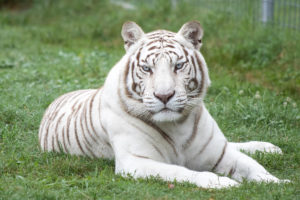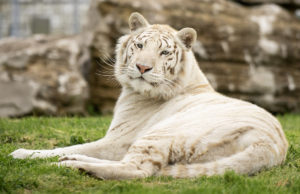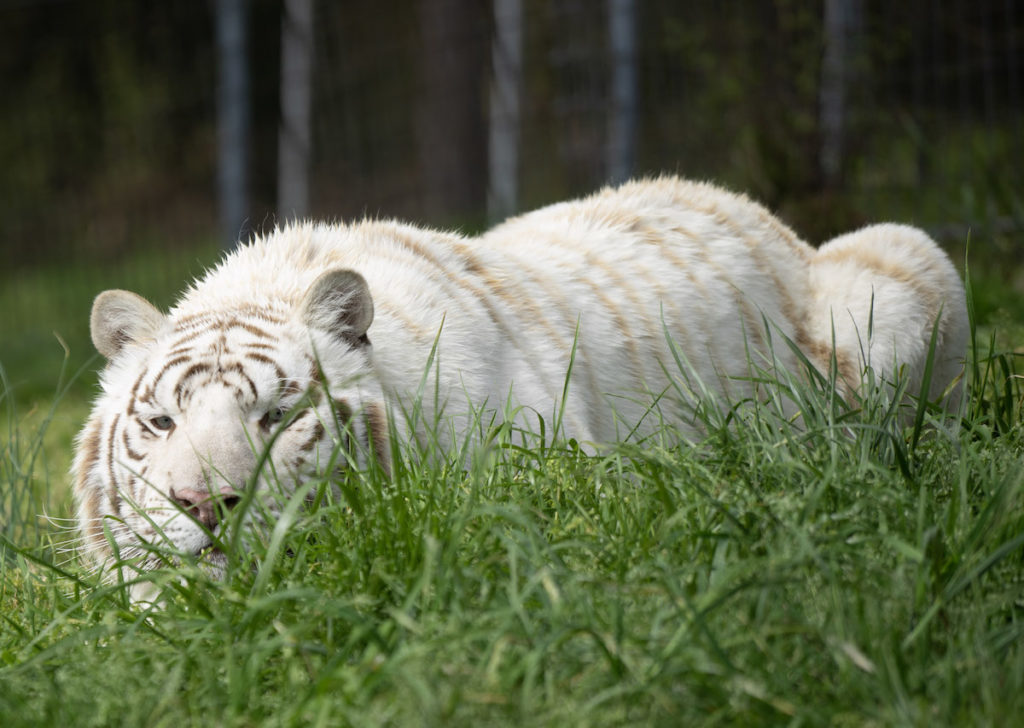The Day That It All Started
May 27, 2020
 Turpentine Creek is home to 45 tigers, 18 of which are white. These beautiful animals have all been rescued from backyard breeders or pseudo-sanctuaries that exist for the sole purpose of using them to make a profit.
Turpentine Creek is home to 45 tigers, 18 of which are white. These beautiful animals have all been rescued from backyard breeders or pseudo-sanctuaries that exist for the sole purpose of using them to make a profit.
White tigers today do not exist in the wild; they can only be found in captivity. The same could not be said 70 years ago, when white tigers could be found sporadically in India. On this day in 1951, the Maharaja of Rewa joined a hunting expedition in the jungles of India with the hopes of successfully finding and killing tigers. During the expedition, a two-year-old white tiger was captured after his mother and siblings, who were orange, were slain by the hunters. After the killings, this juvenile cat fled into a cave for protection. Fascinated by the white tiger, the hunters followed him, built a cage at the entrance of the cave, and forced him out with smoke. Once trapped, he was transported back to a spare palace of the Maharaja, where he was given the name Mohan. At the palace he was housed with access to a private sleeping area and a courtyard. Not long after the tiger’s arrival, the Maharaja ran an ad in the New York Times trying to sell him. No buyer wanted to pay what was being asked, an estimated $28,000, and the young cub remained at the palace in Rewa until his passing in 1970.
 The Maharaja was fascinated by Mohan, and therefore wanted to create more white tigers. His original attempt to do so had him breeding Mohan to an orange tigress, Begum, who was brought to the palace. First, Begum was introduced to Mohan which produced ten orange-colored cubs. Mohan was then bred with one of his daughters, as the Maharaja was desperate to create white cubs. This inbreeding resulted in four white babies, the first white tigers to be born in captivity. These four were then sold to buyers around the world. These buyers were the National Zoological Park in Washington D.C., Delhi Zoological Park in New Delhi, India, and the Kolkata Zoological Park in Kolkata, India.
The Maharaja was fascinated by Mohan, and therefore wanted to create more white tigers. His original attempt to do so had him breeding Mohan to an orange tigress, Begum, who was brought to the palace. First, Begum was introduced to Mohan which produced ten orange-colored cubs. Mohan was then bred with one of his daughters, as the Maharaja was desperate to create white cubs. This inbreeding resulted in four white babies, the first white tigers to be born in captivity. These four were then sold to buyers around the world. These buyers were the National Zoological Park in Washington D.C., Delhi Zoological Park in New Delhi, India, and the Kolkata Zoological Park in Kolkata, India.
However, this wide distribution of those four white cubs was only the beginning. In 1970, nineteen years after Mohan was captured, the captive white tiger population increased from zero to 37; These 37 do not include the vast majority of cubs that did not live long after birth, due to the severe inbreeding and the associated health issues. In the current captive white tiger population, this trend of inbreeding is still prevalent, resulting in many genetic defects. These defects can include crossed eyes, club feet, cleft palates, organ deformities, and spinal deformities, among other issues.
 While these animals may be beautiful, they do not occur naturally and therefore do not serve a purpose for conservation. Species survival plans, created by the Association of Zoos and Aquariums (AZA), do not selectively breed, or inbreed, for specific recessive genes in order to avoid anomalous internal and external conditions of the offspring. This differs from their mission of positively affecting the conservation of the wildlife in their breeding programs. TCWR is not an AZA accredited facility, and therefore does not participate in the breeding of our animals. We are strictly a forever home for them and do not support the inbreeding of white tigers.
While these animals may be beautiful, they do not occur naturally and therefore do not serve a purpose for conservation. Species survival plans, created by the Association of Zoos and Aquariums (AZA), do not selectively breed, or inbreed, for specific recessive genes in order to avoid anomalous internal and external conditions of the offspring. This differs from their mission of positively affecting the conservation of the wildlife in their breeding programs. TCWR is not an AZA accredited facility, and therefore does not participate in the breeding of our animals. We are strictly a forever home for them and do not support the inbreeding of white tigers.
69 years ago, a white tiger cub was captured and bred for entertainment purposes. Today these white tigers are still being bred solely for that same purpose. Every single white tiger that exists in the world today, can be traced back to Mohan, the tiger that started it all.
